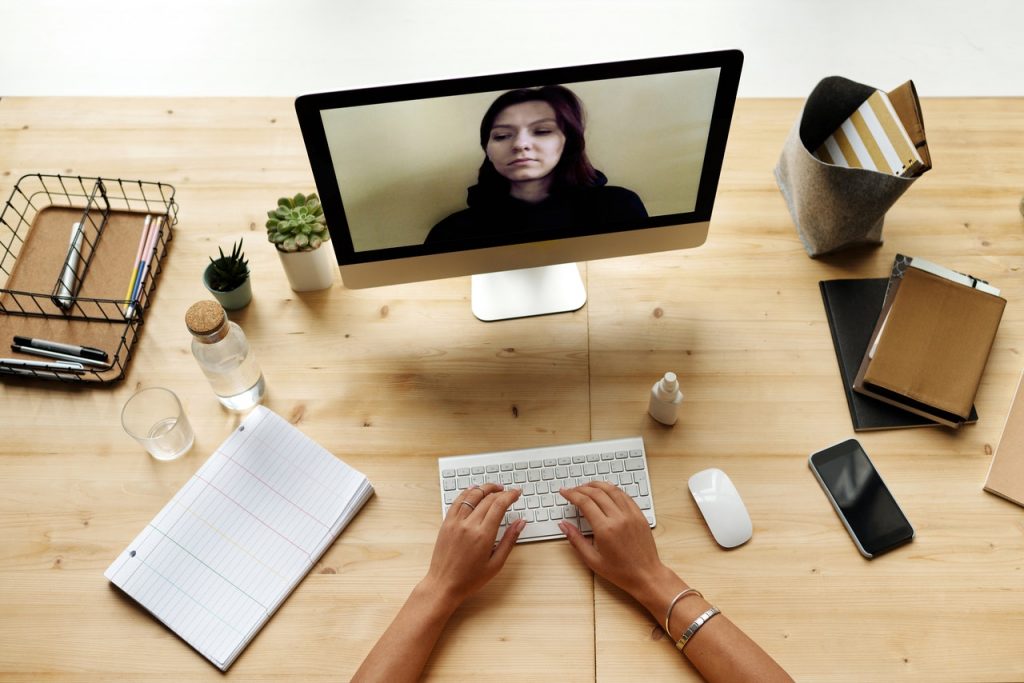The COVID-19 pandemic created new working conditions for almost everyone in the world – in fact, nearly 62 percent of Americans quickly transitioned to remote work in 2019. People who were used to consistently leaving the house for the office five days a week were suddenly forced to adapt to a remote working environment from their home.
If you are new to working from home, or if this has been a part of your work life for many years, it’s still incredibly important to take care of your mental health. Without leaving for the office every day, work life and home life can become inextricably blurred together, leading to stress, burnout and other mental health challenges.
At the height of the COVID-19 pandemic and the remote work scenarios, almost 70% of employees reported feeling high levels of burnout. The effects of work-related burnout reach beyond just your work and can negatively affect your life and your health.
That’s why taking care of your mental health while you’re working from home is so incredibly important. The trained counselors at MyTherapist can help you with new coping skills for productivity, time management and other anxieties, but there are also a few strategies you can try on your own.
Read below for a few strategies that will help you separate work from home – even when you’re working in your own home.
Get up and get ready
While it’s tempting to stay in your lounge wear all day, most research proves that getting up and getting ready for the day will create a more productive environment. So, before you hit the snooze button and work from your pajamas, try going through a regular morning routine of getting ready for the day.
Find a schedule and stick to it

Source: unsplash,com
Now that you likely aren’t commuting into the office every day, you may find yourself with a little bit more time on your hands.
Just as you once had a morning routine that involved waking up, getting ready and commuting to the office, creating a daily schedule of “in office” and “out of office” hours while you’re working remotely is an important habit to create and maintain.
Consider your morning routine first: maybe you get in a quick exercise, listen to a podcast, read a book or sit down and watch the morning news before you check in with work. Your morning routine sets the tone for your entire day and neglecting it can lead to a stressful day. The important thing to remember with your morning routine is to consistently wake up at the same time everyday and try to limit your work interaction until you’re up, awake and ready for the workday.
Your workdays are likely to be just as busy from home as they were in the office, so it’s important to remember to take breaks throughout the day. You can even schedule breaks on your calendar to remind you to get up, move, and take a few minutes off from work tasks.
While your lunch hour may be more flexible when you’re remote, taking a true lunch break is a good way to reset your mind and prepare for a productive afternoon. Eat a balanced meal and take some time away from your email so that you come back for a productive afternoon.
It’s tempting to work beyond the workday and into your evening hours and breaking for the end of the workday may be difficult without the natural transition of leaving the office. However, working too many hours a day can quickly create a burnout situation. Set a time every day that you will be done with work-related tasks and then transition away from work by doing a house chore, taking a walk, or calling a loved one.
Routines are really important – and they’re much easier to put into place when you have to be in the office at a certain time every day. Working remotely will give you more flexibility with your routine, but it’s up to you to continue to practice that routine until it becomes a habit.
Create boundaries

Source: pexels,com
One of the more difficult parts of creating work-life balance is creating boundaries between your work life and your home life. This is even difficult when you’re working in and office and it can become even more difficult when you’re working remotely from home.
How can you create boundaries that let your colleagues know you are done working for the day? Holding space for your personal responsibilities and your life outside of work is one way to create healthy work-life boundaries.
Here are a few tips:
- Communicate your schedule with your coworkers in advance. This includes your paid time out of the office and if your daily schedule is going to change from the company standard.
- Let your team know that you will not be checking emails or other communications and who they should contact in case of an emergency.
- When the workday is over, let the workday be over. Try to limit after-hours emails and chats and save your energy for the upcoming workday.
Setting boundaries with your colleagues ahead of time is an important start, but you must be the one to honor your boundaries.
Setup a workspace

Source: pexels,com
While going into the actual office may not be a reality for you while you’re working remotely from home, you can still recreate the environment of an office from your living space.
Designate an area of your living space – maybe in your kitchen, spare bedroom, or living room – that will be used only for working from home. This will not only help you transition from work tasks to home tasks, but it will also minimize distractions and help you focus throughout the workday.
Designating a spot for your work-from-home schedule will help you tap into productivity and medication and will help you transition out of work and into your home tasks, as well.
Working from home can certainly be a big transition for many people, and with more flexibility in your schedule comes the need to be more disciplined with routines and work tasks. With a little bit of preparation, you can protect your mental health and your personal work-life boundaries while still being a productive employee.







